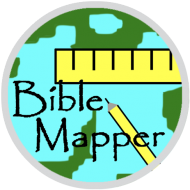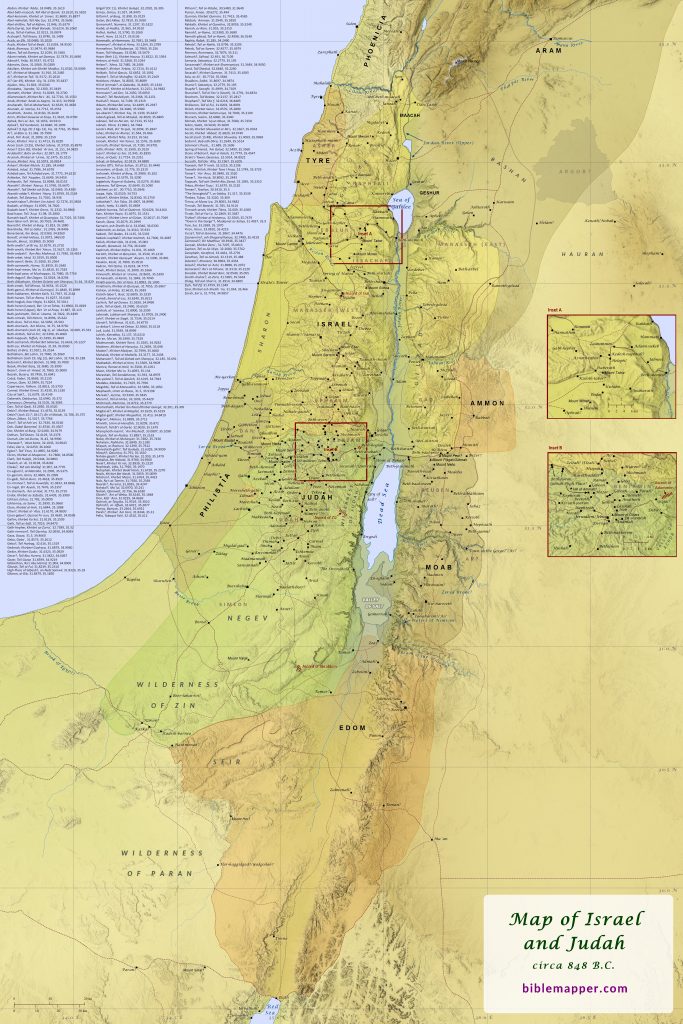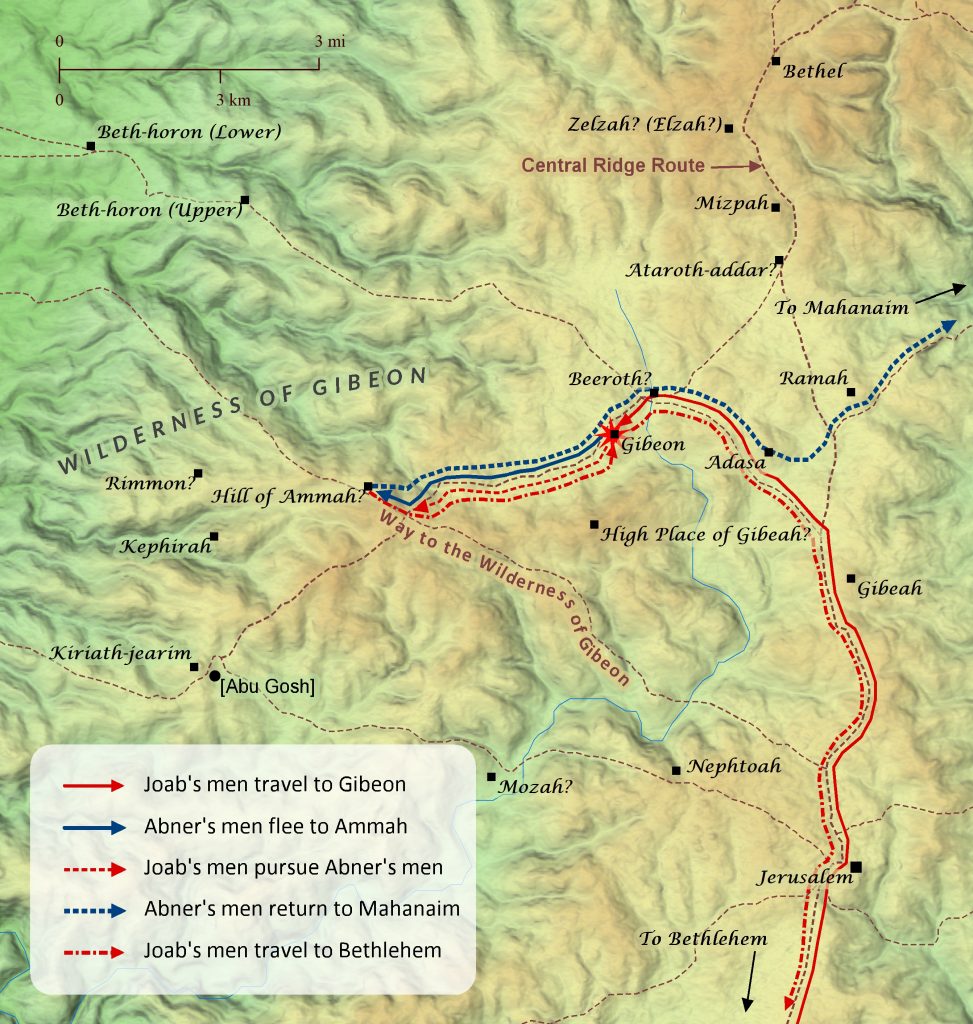2 Samuel 5; 23:13-17 ; 1 Chronicles 11:15-19; 14:10-17
Soon after David became king over all Israel, the Philistines sent forces into the central hill country to find David. No doubt their intent was to keep the newly unified nation of Israel from becoming too powerful under David’s rule and to ensure their own power in the region. But David heard about their plan and “went down to the stronghold” before the Philistines reached the Valley of Rephaim, where they spread out their forces. It is possible that “the stronghold” mentioned in 2 Samuel 5:17 is referring to his recently captured city of Jerusalem, which is referred to as a “fortress” in verse 7, but it is more likely that this term is referring instead to the cave at Adullam. In 2 Samuel 23:13-14, the writer recounts how three of David’s mighty men came to him at Adullam while a band of Philistines was encamped in the Valley of Rephaim, and this is likely referring to the same event described in 2 Samuel 5. This is further supported by David’s question to the Lord in 2 Samuel 5:19 regarding whether he should “go up” to fight the Philistines. It is unlikely that David would have used the term “go up” to refer simply to going out to the Valley of Rephaim from Jerusalem. The writer also notes in 23:14 that the Philistines had posted a garrison in Bethlehem, so David likely had to bypass Bethlehem to reach Jerusalem from Adullam. Given that Bethlehem was David’s hometown, however, he was almost certainly very familiar with alternate routes around the town. After reaching Jerusalem, David led his forces in a frontal attack against the Philistines at a place that came to be called Baal-perazim (“Lord of bursting forth”), and David’s forces defeated the Philistines. Sometime later the Philistines again arrayed their forces in the Valley of Rephaim, and apparently David was at Jerusalem at the time. This time, however, he led his forces around to the rear of the Philistine forces and waited for the sound of marching in the tops of the nearby balsam trees, which signaled to him that the Lord had gone out before him to strike down the Philistines. David’s forces were again victorious over the Philistines and struck them down from Gibeon (per the Septuagint; Hebrew reads Geba) to Gezer.
First Encounter:
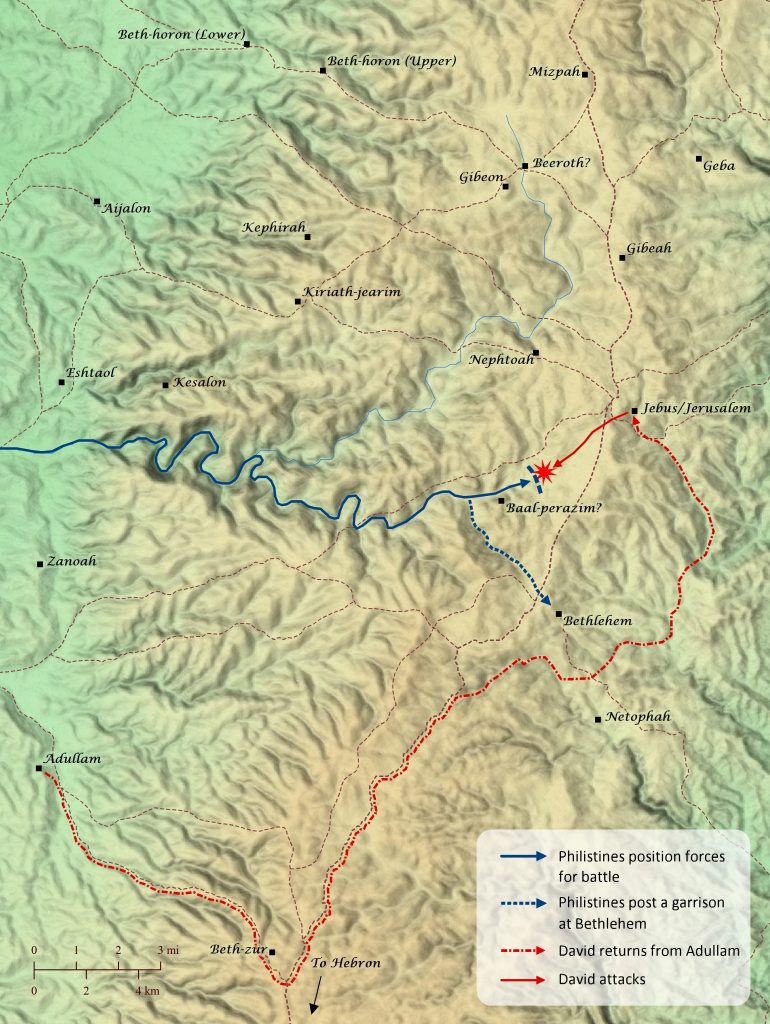
Second Encounter:
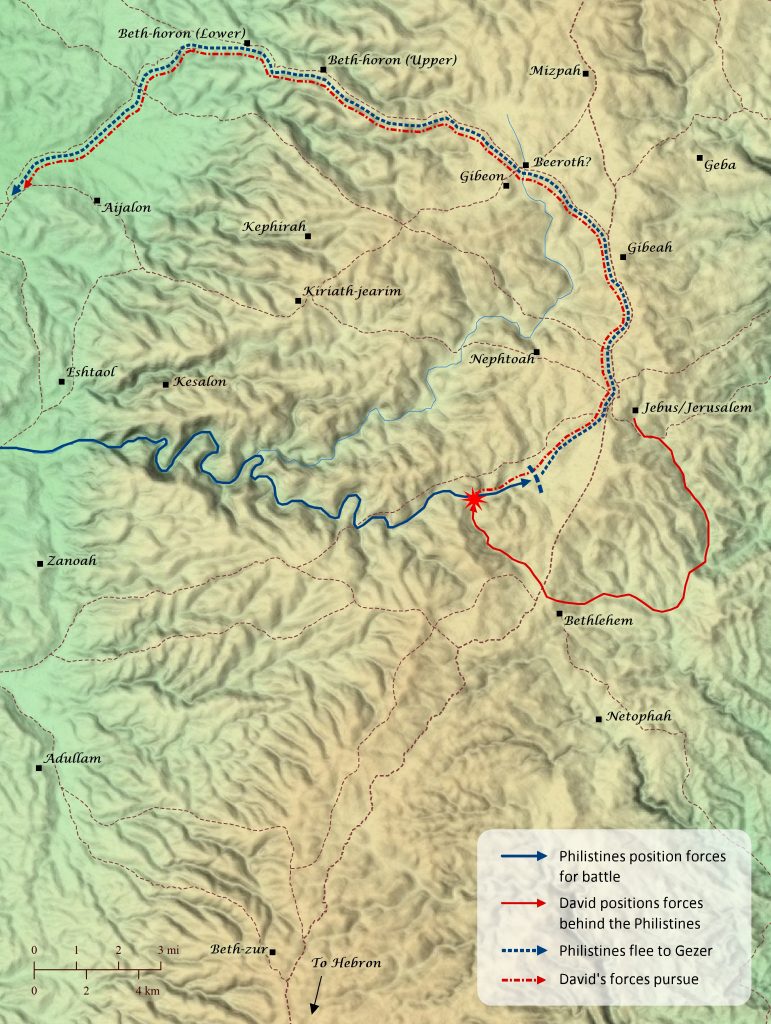
⤓ download hi-res file for First Encounter
